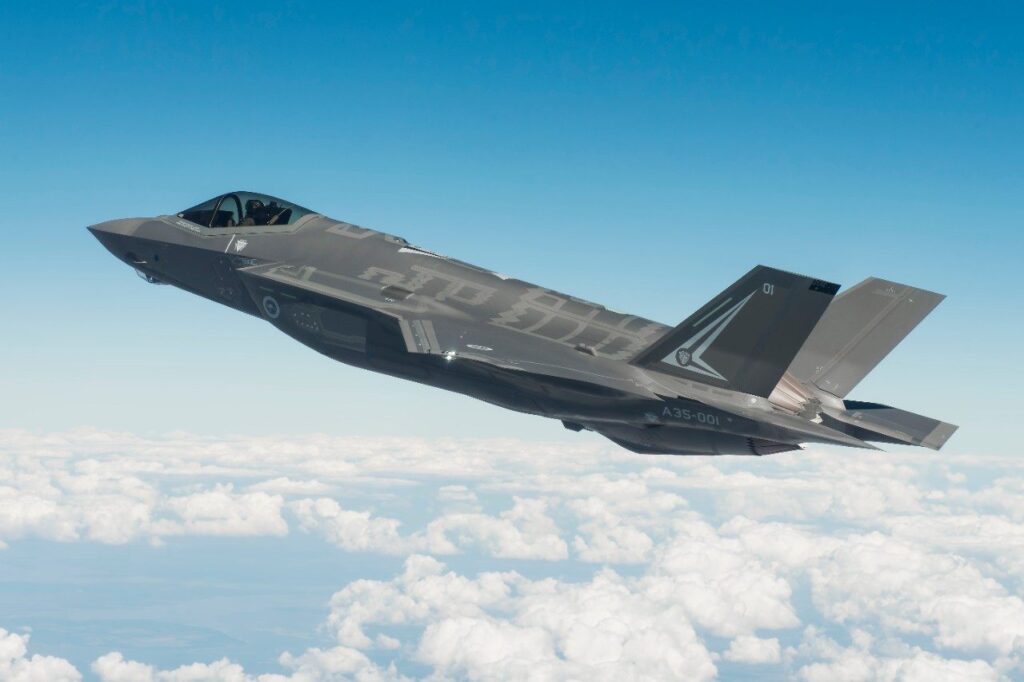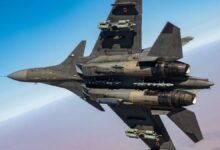A Race to 5th Generation Aircraft: Necessity or Overhyped?
Stealth Aircrafts Shaping the Future of Warfare

Earlier in the year 2013, 2 Iranian F-4 Phantom interceptor planes attempted to intercept a US MQ-1 Predator drone in international air space. F-4 pilots witnessed what they never imagined. A 5th gen aircraft “F-22” on an escort mission for MQ-1 was flying under the Iranian F-4s, undetected. F-22 pilot pulled up to their left wing and radioed the F-4s giving a cold warning ‘Really ought to go home’. Although the situation didn’t escalate, this incident signifies stealth technology’s importance as deterrence.
Stealth refers to technology designed to make vehicles or aircraft invisible to enemy radar and electronic detection devices. Stealth’s relevance today is uncertain, yet it clearly enhances tactical advantage in conflicts. Modern-day naval ships are enabled with similar stealth features. Countries like Turkey, China, Russia, South Korea, and India are in the race to build stealth fighters and bombers for air dominance.
Evolution of Stealth Fighters
The US was the first one to step in this race. F-117 also known as NightHawk is a single seater twin engine stealth jet bomber, initially built by Lockheed Martin Corporation. The unique design of the F-117 and an external coating of Radar-absorbent material made this aircraft nearly invisible to radars. It joined active service with the US Air Force in 1983 and as of today is used for training purposes only. The success of the F-117 foundation of stealth aircraft was laid. During later stages, the addition of stealth aircraft such as the B-2 Spirit bomber, F-22 Raptor and F-35 Lightning II multirole aircraft increased USAF’s stealth capability.

This race extended beyond the USA, with China and Russia entering this spectrum with their own fifth-generation fighters, J-20 and SU-57. China’s J-20 consist of a delta wing design with canard and no internal auto-cannon. As per the latest data available in the public domain, there are over 200 J-20s in service with PLAAF since 2017. On the other hand, Russian SU-57 which was inducted in late 2020 is no doubt a highly manoeuvrable aircraft of the 5th generation category. But one major drawback with both Russian and Chinese 5th-generation fighters is that both are unclear regarding their stealth capability, which is an important feature of any 5th-generation fighter.
Ongoing Projects Globally
At present, where USA is the only leading country with proven stealth technology deployment in real-life scenarios. A global race is on to develop domestic 5th-generation fighters. This includes projects like Turkey’s KAAN, China’s J-20 and J-31, Russia’s SU-57 and SU-75, and India’s AMCA program.

Turkey
On February 21st, 2024 Turkey successfully conducted the first test flight of KAAN. It is a dual-engine 5th generation stealth fighter jet, under the development phase by Turkish Aerospace Industries. As per the plan, it will replace Turkey’s current US-made F-16 Falcons and will also be available for export. After the first flight of Korea’s KF-21 Boramae, Turkish KAAN’s first flight is another milestone achieved in the global development of the 5th generation fighters.
Japan
Japan Air Self-Defence Force currently operates the US-made F-35 Lightning II but in 2016 Japan conducted a flight test of a Mitsubishi X-2 aircraft. They intended to produce this aircraft on a small scale limited to R&D roles only. This model’s success spurred the development of Japan’s domestically produced 6th generation fighter, the Mitsubishi F-X.
South Korea and Indonesia
South Korea developed the KF-21 Boramae, formerly known as KF-X, in collaboration with Indonesia as a 4.5-generation fighter jet. This advanced multirole aircraft boasts improved performance for modern combat missions compared to older jets. While not a full-fledged 5th-gen aircraft, the KF-21 incorporates some stealthy features to reduce its radar cross-section (RCS). There is no internal weapon bay, though future upgrades will introduce internal bays. The KF-21 first took flight in July 2022 and has undergone over 150 test flights. South Korea aims to deploy this jet by the latter half of 2026.
India
Advanced Medium Combat Aircraft (AMCA) is a 5th generation of fighter aircraft under development by India’s Hindustan Aeronautical Limited (HAL) and Aeronautical Development Agency (ADA). It was initiated in 2010 and envisioned as a medium-weight aircraft, but now is being developed as a heavy 25-tonne class fighter.
Also Read, Understanding The AMCA Programme
In terms of design AMCA features a sleek and stealthy airframe crafted from advanced composite materials to minimise radar cross-section and enhance survivability in hostile environments. Its aerodynamic design, coupled with its advanced flight control system will allow high maneuverability and agility enabling it to outperform adversaries in both air-to-air and air-to-ground engagements.

The project gained approval from the central government in March 2024 with funding of around ₹15,000 crore. Under this approval, the aim is to produce five prototypes within the next 5 years. The aircraft will be in operational role by 2030 as per plan.
Understanding India’s Approach to 5th gen
Pakistan, in 2022 inducted Chinese J-10C fighters into their airforce in response to India’s procurement of Dassault Rafale. Pakistan is also in consideration of inducting a 5th-gen aircraft in its aerial fleet to gain air superiority over India. This has led to Pakistan’s interest in China’s under-development J-31 (Chinese copy of F-35) and partnership in the development of Turkish KAAN. Moreover, in recent media coverage, it has been stated that China has deployed a squadron of J-20 fighter aircraft 150km away from Indian territory. Driven by regional tensions and a desire for self-reliance. India’s approach to 5th-generation fighter jets is a calculated gamble.

This raises two major questions, ‘Should India procure a 5th gen aircraft available in the market (F-35 or SU-57)? or ‘Should focus on the development of AMCA?’. Talking about acquiring a 5th-generation fighter either from Russia or the USA is itself a big question.
India was a part of the Fifth Generation Fighter Aircraft (FGFA) development program with Russia, from which India stepped out in 2018 due to disagreement over the transfer of technology, and many other concerns about the aircraft’s engineering. This added to the delays in the development of the SU-57 and still the SU-57s operated by the Russian Air Force are not fully operational.

The future of the F-35 acquisition for India till date remains unclear. But there’s a possibility the US might offer the aircraft in the future. However, India would need to meet strict US security and operational standards. The F-35’s undeniable prowess as a fighter jet comes at a hefty price. The burden of the initial acquisition and maintenance cost of the limited F-35 fleet will significantly impact India’s defence budget.
India faces a tough choice between the F-35 and Su-57, both with significant drawbacks. Russia’s involvement in the war with Ukraine has affected S-400 delivery and similar can happen with the SU-57 which could leave India waiting. The F-35, while undeniably reliable and powerful, would strain India’s budget with its high purchase cost and maintenance needs. Currently, there’s no specific answer to any of the questions mentioned.
The AMCA program seeks to propel India into an elite club of nations with domestic stealth aircraft. Development timelines stretch into the next decade, leaving the IAF with a potential capability gap. Yet, success would mark a significant leap in India’s defence indigenisation and provide a potent deterrent against emerging threats. Only time will tell if India’s gamble on the AMCA pays off. However, achieving domestic mastery of 5th-generation fighter technology would be a game-changer for India’s airpower.




